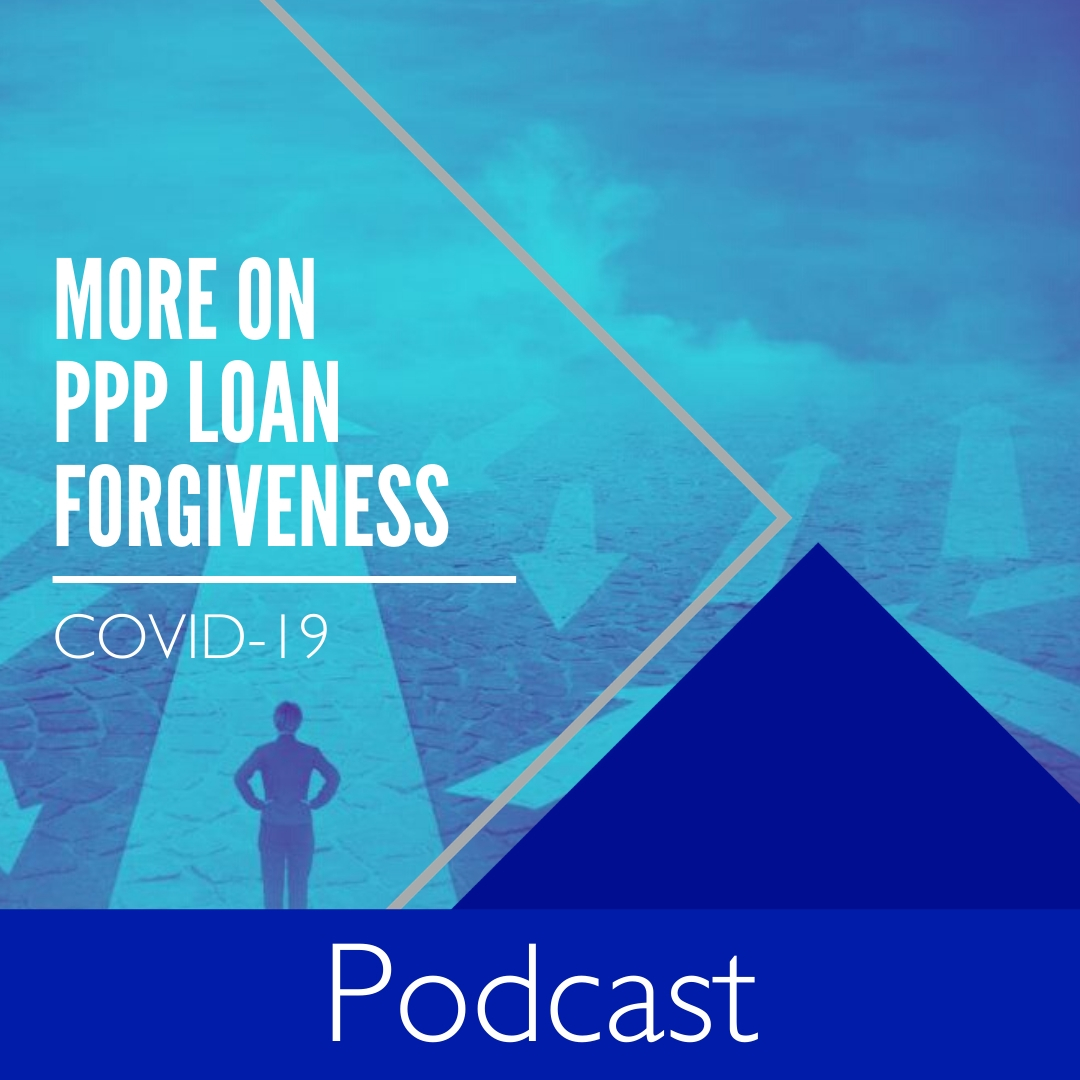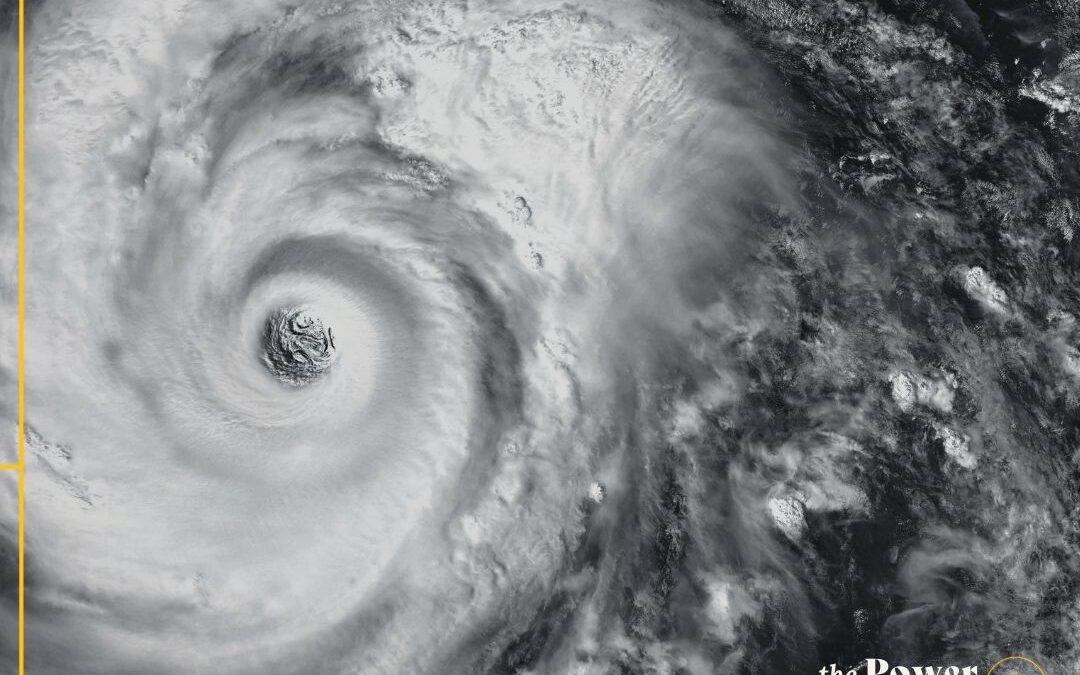We recorded this show on May 20, 2020, and things are changing daily. So this is what we know as of the time of recording.
On Friday, May 15, 2020, the Paycheck Protection Program (PPP) loan forgiveness application was released, and there’s still a lot of questions, but this document really starts to clear things up—at least a little bit. But before we get there, let’s talk about some of the other items that happened recently.
As kind of expected, the IRS came out and said that the PPP loan amounts that end up being forgiven—they’re not going to include that as taxable income. And that’s good news, but that’s kind of where the good news ends, because they also said that any expenses that are paid for with loan money that’s ultimately forgiven—those expenses are not going to be deductible. So, from the way I look at it, it kind of looks like we end up at the same place as we did before.
I heard, though, that that may change—is that correct?
There is, and I hope they do, because there’s talk in Washington right now to change the law so that the forgiveness portion will still not be taxable and that you can take the expenses and deduct those. So normally the IRS doesn’t like double-dipping—and that’s really what this would be, is it would be double-dipping—but since this program was designed to be a stimulus and to get businesses through difficult times, I think it might be needed.
So I also heard that there may be some other changes coming with this—is that correct?
Yes, there are a lot of things that are out there. Probably the two that might actually end up being passed are:
- Right now we have that eight-week window where a company can determine what their forgiveness is; I think that may expand. It may expand to 12 weeks or 10 weeks or maybe even as far as 24 weeks (is what they’re talking about), but I think we’re going to see an expansion of that. Now, I wouldn’t guarantee this because none of it’s been passed.
- The other thing is the forgiveness part has pretty much been limited to 25 percent of those other non-payroll expenses and 75 percent of the forgiveness has to be from payroll-related. I think they may do some tweaks in those numbers, too, to allow some of those non-payroll items to be forgiven at maybe higher than a 25 percent rate.
Right. So let’s talk right now about what was learned with this application.
Sounds good. Well, there’s a lot of things that we kind of now know, even though like I said earlier there’s a lot of things that we don’t—but here are some of the highlights:
-
- Unlike the actual loan application (which is a pretty simple two page-form with some certifications), the forgiveness loan application is much more comprehensive, and it has to be, because it has to take into account the actual payroll that you pay during this time and some of the limitations that you have based off of how much you pay in wages and how many employees that you have.
-
- It also clarifies a little bit on those companies that received the Economic Disaster Loan advance (that EIDL loan), which was capped at $10,000. So what the PPP application does is it actually reduces the amount that can be forgiven by the amount of that loan advance. So at the end of the day, it ends up being a non-taxable advance, which is going to be kind of nice.
-
- It also looks like a company can include payroll costs that are what they call both “paid” and “incurred.” So a company might be able to take its first pay date after the loan was received within that eight-week period and use that as loan forgiveness. And at the end of it, they might be able to take some of the expenses that were paid for payroll that were incurred but actually weren’t paid until outside of the eight-week period. So, they made it so it’s a little bit user-friendly on the payroll side.
-
- And then they also did an alternative payroll period, which makes some of these calculations easier. I’m not going to go into detail on it, but that’s basically what it does—it just makes the calculations a little bit easier.
-
- For non-payroll costs, they also use kind of the “paid” or “incurred” during the eight-week period. So, as long as those non-payroll costs are paid or they’re incurred and paid kind of at the next time that they’re due—those can be included now inside of the eight-week window.
- And a big thing—which I think we’ll talk about next week because I still have some questions on it—is they did add a “safe harbor.” So if you think that your full-time equivalence might be lower during this eight-week period, or maybe you paid some employees less during this eight-week period, there’s some “safe harbors” out there now that we’ll talk about next week.
So although there’s still a lot of unanswered questions, the picture is starting to clear up. Many companies are in the middle of their eight-week period, which makes it important for this guidance to come out really soon (we were hoping for more—but, you know, we got what we got). My thought is that even though it is the eight-week period, I think that that will probably be extended.
Sign Up to Receive Email Updates
Be sure you’re getting the latest insights as legislative developments occur. We’re here for you with tax insights and business resources.
Sign Up Now
We Are Here for You
Contact us to talk through the challenges your business faces as you navigate through this unprecedented time. No doubt you’ll need help assessing cash flow and making smart projections, reviewing loan covenants, lining up bridge financing, talking to banks and lenders, figuring out staff loads and employee counts, handling disrupted supply chains, and so much more.
Read An Important Message from Our Firm





